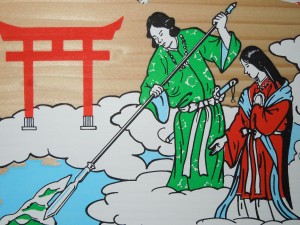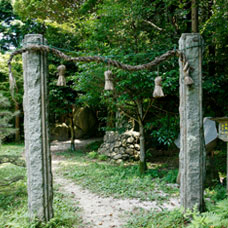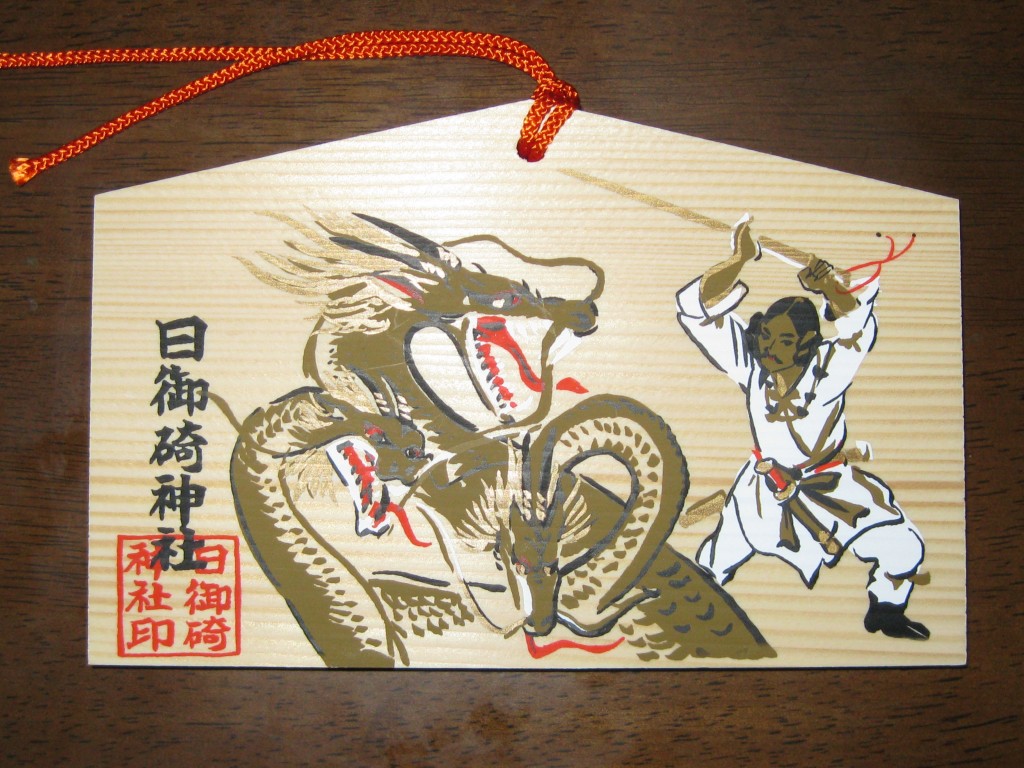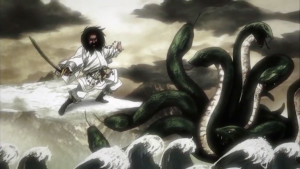The Shimane website celebrating the 1300th anniversary of the Kojiki has a marvellous page explaining the commonalities of Japanese myth with stories found elsewhere in the world. It’s a refreshingly global view of the mythology, which is often treated by Nativists and nationalists as if it were something special to Japan as a land of kami. Here below is what they write, a piece which can be accessed on their website by clicking here.
************************************************************************

Izanagi and Izanami stirring the primal brew
Similarities to Other Mythology
Similar themes can be found throughout mythology and religion the world over. Many themes in Japanese mythology share striking similarities with other world mythology.
Let’s start with Izanami and Izanagi. The idea of the world being formless and chaotic is quite common, and Izanagi and Izanami’s creation of the world is similar to the story of Adam and Eve, in the sense that a male and female pair was necessary for creation, be it of the world itself or the people who would populate it.
After Izanami’s death, the reason she gives for not being able to go back with Izanagi is that she ate the food of the underworld. Persephone’s abduction by Hades in Greek mythology shares this idea that once food of the underworld is eaten, it affects the one who has eaten it. Because she had eaten three seeds of a pomegranate, Persephone has to spend three months out of every year in the underworld. During this time, Persephone’s mother Demeter, the goddess of the harvest , is sad and nothing will grow, which is how Greek mythology explained the existence of winter.

Supposed entrance to the underworld (in Shimane ken)
Izanagi’s quest to bring back Izanami from the underworld is very much like the story of Orpheus and Eurydice, although the endings differ greatly. Orpheus and Eurydice are greatly in love, but she is bitten by a viper and dies. Orpheus goes to Hades to bring her back, and through the power of his music, convinces Hades to let her go. Hades adds a condition, though; he must not look back until he has left the underworld. Just as he is about to return to the land of the living, Orpheus looks back, fearing that the gods have tricked him, and Eurydice, who had been following behind him, is lost to him forever. Both tales show examples of how men are not the most patient creatures in the world.
Worship of the sun is also a common thread, from the Greek Apollo to the Egyptian Ra. The idea that the sun and moon are siblings, as the female Amaterasu and male Tsukuyomi are, is also matched in Greek mythology in the brother-sister pair of Apollo and Artemis.
Susano-o’s slaying of the Yamata-no-Orochi can be seen as a different version of the dragon-slaying legends of medieval Europe, with Kushinada-hime as the fair maiden in distress and Susano-o as her knight in shining armor. It also matches up nicely with the Greek legend of Perseus and his slaying of a sea serpent to save Andromeda from being sacrificed to it. Perseus and Andromeda also get married after he rescues her. The Yamata-no-Orochi itself is similar to the hydra, in that they are both serpents with multiple heads.
The testing of Okuninushi by Susano-o is similar in some ways to the trials of Hercules, in that the tests were considered to be impossible and most likely lead to the death of the one being tested. The amazing feats of strength shown by Yatsukamizuomizunu, although being on a much larger scale, also are comparable to some of the exploits of Hercules.
The Kojiki provides a record of imperial lineage that shows direct descent from the gods and establishes rightful authority to rule. This is similar to the “begats” in the Old Testament that trace King David’s lineage and show him to be the rightful ruler of Israel.
Mythology provides a window into the world view of a culture, and while each culture’s mythology has a unique sensibility to it, finding connections between world mythologies shows that maybe we’re not as different as we think.



Leave a Reply